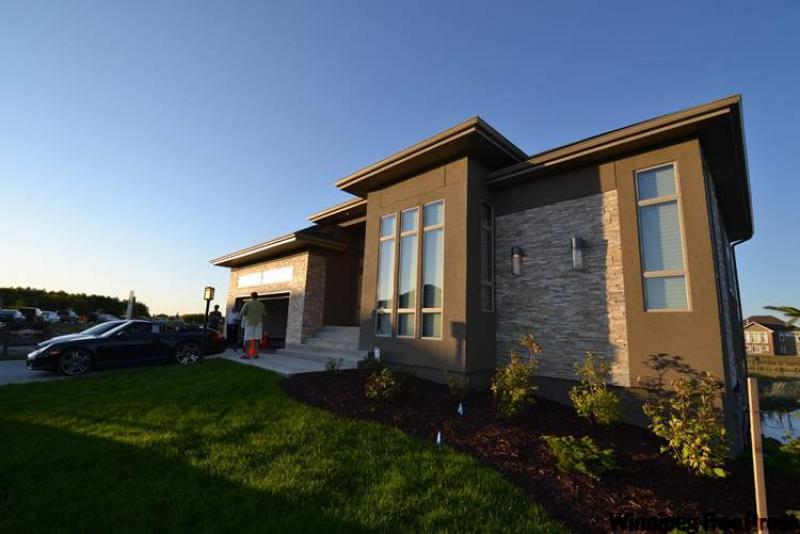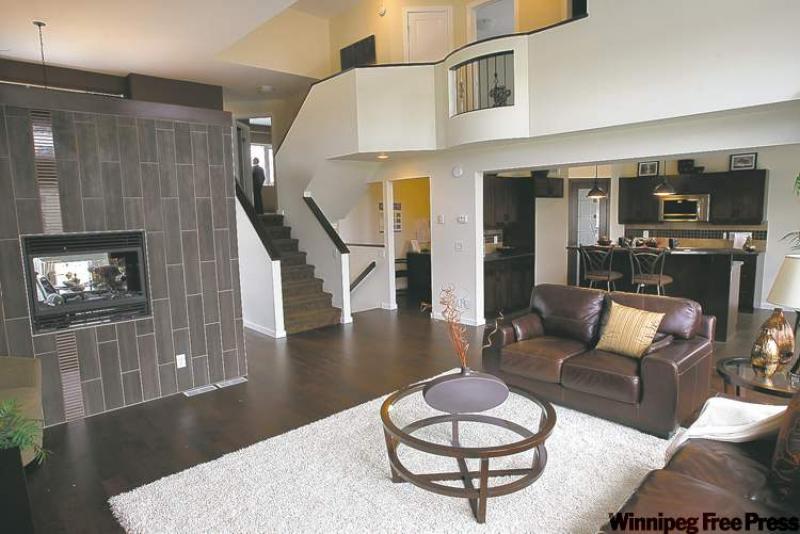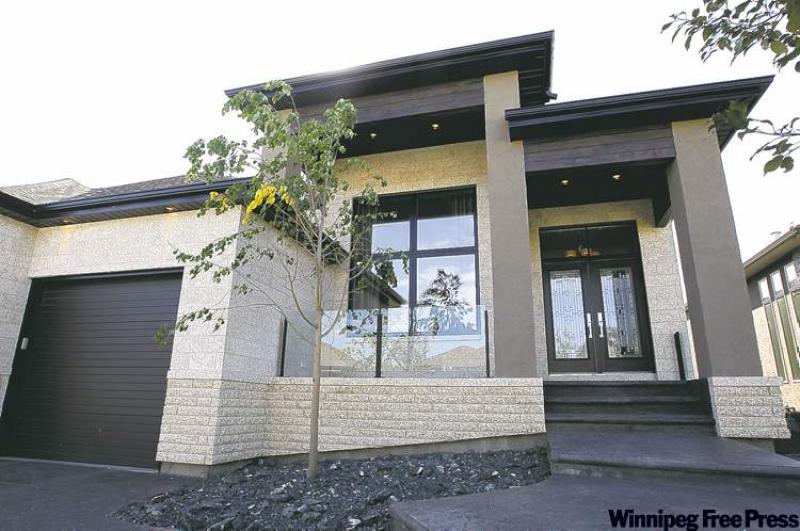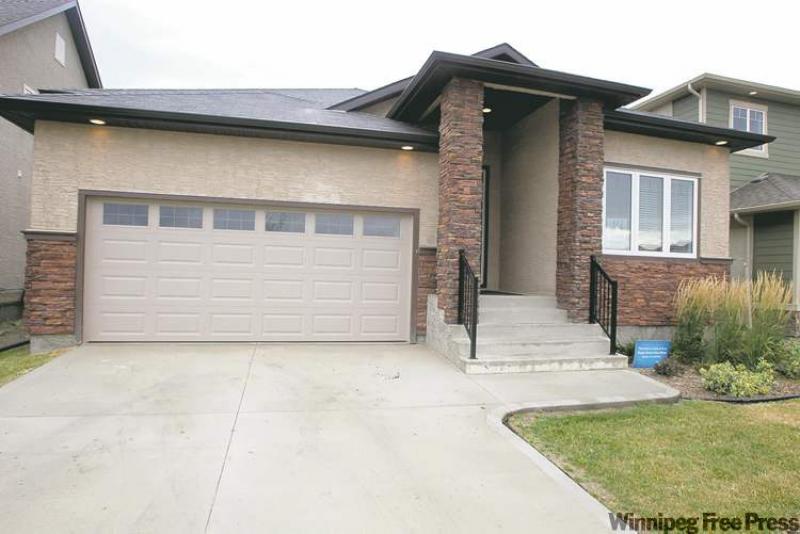New Homes
New Homes
Parade of Homes offers shoppers' paradise
It's Saturday morning, you've got your paper and your coffee and now you're planning your day based on what's listed.
Not to worry -- your day and part of your next three weeks' worth of entertainment unfolds today. The 2011 Fall Parade of Homes officially opens at noon today, Saturday, Sept. 17, and runs through Saturday, Oct. 8.
This year, the Manitoba Home Builders' Association is proud to present 100 new homes on display for everyone to enjoy.
Show-home hours are Monday through Thursday from 3-8 p.m. and Saturday and Sunday from noon-6 p.m. Show homes are closed on Fridays except by prior appointment.
Sales staff are in each home, ready to explain its unique and special features. Ask about the builders and suppliers. After all, MHBA new-home builders pride themselves on building the best new homes in Canada.
Each visitor is sure to come away with new ideas and concepts to incorporate into their new home.
This year, 35 builders are featuring the finest new homes in 19 subdivisions. Both single-family detached homes and condominiums are on display. In addition to Winnipeg, there will be show homes in seven other cities and towns.
Quality, choice and affordability are all key components of each new home.
The Fall Parade of Homes has something for everyone. If you're looking for that first new home, this is your opportunity to see the widest variety at one time. If you're considering selling your existing home for more space, less space, more yard, less yard, newer amenities and a different design, everything you could possibly be looking for is featured at the Fall Parade of Homes.
If you're thinking of making some changes in your existing home, nowhere else will you see so many new and dynamic building styles and techniques as at the Parade. If you just want to see the best of the best and envision your dream home, this is the place to do it.
Your new-home dream starts with the Fall Parade of Homes.
If you missed the Parade magazine in your Winnipeg Free Press home delivery, it is available online at www.homebuilders.mb.ca or www.winnipegfreepress.com
You can also pick up a copy at any Steinbach Credit Union.
Come early and come often to the Fall Parade of Homes.
Mike Moore is president of the Manitoba Home Builders' Association.
New Homes
Fall Parade of Homes set to deliver dreams
There has been a constant flurry of activity on south Waverley, south Lagimodiere, west off Plessis, the westerly extension of Leila, south of Kildare and throughout communities such as Stonewall and Oakbank. That flurry is the finishing touches being put on 100 new show homes in readiness for the 2011 Fall Parade of Homes.
The Manitoba Home Builders' Association is pleased to present this year's Fall Parade Sept. 17 through Oct. 8.
Close to 40,000 people are expected to visit the 100 Parade entries. We are pleased to be able to offer homes for viewing in 19 subdivisions.
Although most are in Winnipeg, this year's Parade also features new homes in Steinbach, Oakbank, Stonewall, LaSalle, Headingley, East St. Paul and Brandon. These new homes have been built by 35 new home builders, the best in their craft.
The MHBA Parade of Homes is the largest and most popular such event in Canada. The next largest similar Parade on record is 30 homes. It is the best attended, the longest-running and the most informative. Every builder with a home in the Parade welcomes the public to visit their show home and talk to the new home sales agent. They want questions and they want opinions.
The 100 homes in the Fall Parade represent the best in design and construction. Our city has the third oldest housing stock in Canada. When a Manitoba new home builder constructs a new home, he builds it to last.
Manitoba new homes are also the most energy efficient in Canada. Water conservation and energy efficiency are important considerations for these builders. MHBA member builders and suppliers keep abreast of the latest trends and techniques to ensure that every detail is the best available.
Each of the 100 show homes is unique. Be certain to ask about special features that make this house the right one for you. With such a wide selection available, you will undoubtedly be surrounded with outstanding ideas and concepts that will make the Fall Parade of Homes an enlightening and enjoyable experience.
Plan now to visit as many of the new show homes as possible. The dream home that you've been looking for is waiting for you at the 2011 Fall Parade of Homes.
Mike Moore is president of the Manitoba Home Builders' Association.
New Homes
Love affair with well-built condominiums
APPARENTLY, pent-up home buying demand in the Waverley West area isn't confined to Bridgwater Forest and South Pointe.
As it's turned out, if you build condominiums -- build them well, in a prime location and at an attractive price point - home buyers will come, en masse.
"When we had our grand opening for Annex Condominiums in the spring, the response was unbelievable," said Karma Developments' Myles Kraut of the development, which will be located at Lee Boulevard and Barnes Street (off Bison Drive).
"Some people waited in line six hours to reserve a unit. We couldn't believe it."
The end result of the first offering of the condos -- one- and two-bedroom tower units that ranged in size from 720 square feet to 1,122 square feet plus 56 condominium bungalows (two- and three-bedroom) and 28 three- and four-bedroom town homes -- was that the 184 units sold out in about three weeks.
It was a response that prompted Kraut and his partner at Karma, Marc Kipnes, to move up the construction schedule for Annex's final phase.
"We didn't think we'd start the last tower for another year," Kipnes said. "But the demand is there -- in a big way -- so we're going to go ahead with it way ahead of schedule. It's going to be called Lumen Tower, and will have 112 units."
Over half those units will be the 720 sq. ft. one-bedroom plus den units that captured the imagination of buyers, he added.
"Everyone loved them. First, they couldn't believe the unit was only 720 sq. ft. in size, there was so much liveable space. They also loved the fact that you could get a brand new unit in a great location for under $200,000. A significant number of them will be under $200,000 in Lumen Tower."
As was the case with the first tower, each suite will come complete with an impressive collection of standard finishes. And as before, there will be no need to upgrade.
"Definitely, we will incorporate the same type of finishing materials in the Lumen Tower units -- maple shaker thermofoil cabinets, granite counter tops, ceramic backsplashes, stainless appliances, laminate hardwood floors and upgraded carpet," Kraut said.
"What you see is what you get. There will be no need to upgrade whatsoever -- our goal is to make the buying process as simple as possible."
The buildings will also be extremely well-built with ICF (insulated concrete form) walls and tri-pane windows that will ensure that interiors are comfortable and quiet. Thanks to nine-foot ceilings, as well as strategically-placed curtain wall glass, interiors also promise to be naturally bright. Layouts will be open-concept and have been designed to maximize available square footage.
"There will be absolutely little in the way of wasted space," said Newman, Greenberg & Associates' Barry Greenberg. "And the amenities will be impressive, too. There will be an internet cafe, communal patio and gym, as well as surface and underground parking. The surface parking will feature environmentally friendly permeable pavers.
"Most importantly, there will be no bidding wars -- simply come to the display centre (at 1325 Markham Rd.) to select your suite."
Kipnes said it will be worth the trip to come to Annex's grand opening for Lumen Tower suites on Sept. 10.
"We're going to have a special on that gives buyers a three-per-cent discount on whatever unit they choose -- a potential saving of up to $9,000," he said.
"This is an exciting time for us. We knew we had a good, value-packed product, but didn't expect such a strong response. On Sept. 10, buyers can not only reserve a new home at today's prices, but save some extra money. That's what we're all about -- providing buyers with well-built, value-packed homes."
Likewise, both Newman and Greenberg are excited about representing such a well-conceived project.
"We represent only the highest-quality projects," Greenberg said. "A lot of people want to live in the area, so we're taking care of a wide customer base. We're pleased to be filling a need with such an affordable, well-done project."
To learn more about Annex Condominiums, see www.annexcondos.ca or call 955-9898.
lewys@mts.net
New Homes
HST would prove disastrous for campaign
AT a total of 55 to 45 per cent, voters in British Columbia opted to return to the old PST/GST form of taxation instead of the Harmonized Sales Tax. The hated HST was brought in by then-premier Gordon Campbell on July 1, 2009, contrary to an election promise of his three months earlier.
The B.C. referendum was unprecedented in nature and displayed dissatisfaction with more and additional taxes.
The HST is a combination of the PST and GST with a few major differences. Each of the PST and GST has various tax exemptions within them. Under the HST, almost all of the exemptions disappear and pretty much all of consumption bears the full brunt of the combined tax.
The biggest problem with this tax is the sweeping generalizations it makes. It taxes without consideration the necessities of existence. It taxes food, clothing and shelter equally and harshly. Without necessary exemptions in place, it put certain items out of the grasp of some consumers.
In this column, we deal primarily with residential construction, so we will use that as our example.
A unilaterally applied HST in Manitoba would increase the price of the average new home by over $15,000. That is enough to kill a sale and the thousands of jobs that go with the materials and labour associated with it.
We could not withstand an increase of $15,000, especially knowing that it all went into a general bottomless pit of taxes.
Winnipeg and Manitoba are the renovation capitals of Canada. In B.C. and Ontario, the HST increased each renovation project by 2.5% in costs and served to become a tax on a tax. Renovations suddenly became the domain of the underground economy.
Rather than making more money, governments found themselves making less because consumers opted to find people who would do the work for cash, no contract or questions asked.
What does that mean for us in Manitoba? We're not likely to hear a lot about the HST through Oct. 4 when we have our provincial election. Publicly opening the HST window would be a disastrous campaign strategy.
However, that doesn't mean we shouldn't ask for a hard and fast HST platform by all parties. Much like many other ideas, just because something was implemented in B.C. and Ontario doesn't make it a good idea for Manitoba.
Mike Moore is president of the Manitoba Home Builders' Association.
New Homes
Time for government to revisit rebates
THE Canadian Home Builders' Association has served notice to the federal government that it's time to look at new housing and renovations in order to right both an old and a new tax wrong.
Although the federal budget does not come forward until much later, the time is ripe to make a case for bringing legislation up to date.
When the GST was introduced in 1991, a new housing rebate was introduced to ease the burden on consumers. This rebate reduces the actual rate of GST payable to 3.2 per cent from five per cent, depending on the price of the new home. When these GST thresholds were introduced in 1991, the federal government estimated 95 per cent of all new home buyers would be eligible for the rebate.
In the goods and services tax technical paper, it stated that the government would review these thresholds every two years and adjust them as necessary to reflect changes in economic conditions and housing markets.
However, the GST rebate thresholds for new houses have remained frozen since 1991, 20 years ago. The CHBA is asking the federal government to review this policy with respect to protecting housing affordability.
On the renovation side, the home renovation tax rebate is necessary to restore fairness in the tax system. Prior to the introduction of the GST, the nine per cent federal sales tax applied only to the materials portion of home-renovation expenditures. In addition, the FST was applied to the prices at the factory as opposed to the full retail price.
Since materials only account for a portion of the full cost of a renovation, it was estimated the FST represented only a 2.5 per cent tax on the delivered cost of a home renovation. The current GST taxes the same project at five per cent, twice the previous amount. In provinces where HST (harmonized sales tax) is in place, the tax burden is even greater.
Another bonus associated with a home-renovation tax rebate is its contribution towards battling the underground economy. By requiring homeowners to have receipts to back up their HRTR claims, the government would deal a major setback to underground operators and help legitimate, honest tax-paying contractors.
In the end, affordability must be the primary benefit of these tax-saving measures. The CHBA is taking its case to Ottawa in hopes that all may share in this benefit.
Mike Moore is president of the Manitoba Home Builders' Association.






